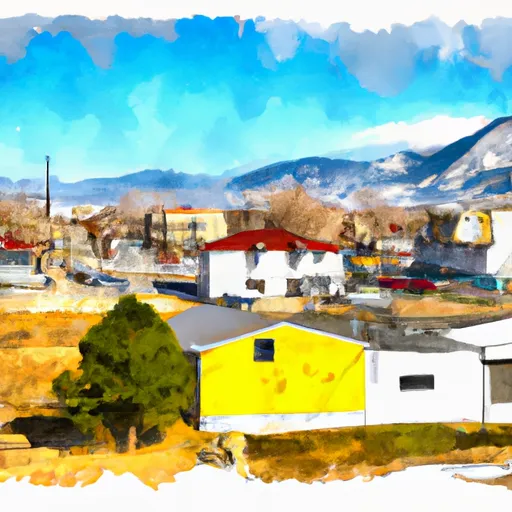-
 Snoflo Premium
Snoflo Premium
Get unlimited access to all our content
With no Ad interruptions! - Start Your Free Trial Login with existing account
Gardnerville
Eden Index
Climate
8.6
•
Recreation
7.0
•
Community
3.2
•
Safeguard
6.7/10

Gardnerville, Nevada is a small town located in the Carson Valley. The climate in Gardnerville is typical of the high desert, with hot, dry summers and cold winters that often bring snow. The town lies in the Carson River Basin and is surrounded by the Sierra Nevada Mountains. The Carson River, which runs through the town, is an important hydrological feature, providing water for irrigation and recreation. Outdoor enthusiasts can enjoy hiking, biking, fishing, and boating in the nearby mountains, forests, and rivers. The town is also home to several parks and golf courses. Gardnerville is a charming community that offers a quiet and rural lifestyle with easy access to the great outdoors.
What is the Eden Index?
The Snoflo Eden Index serves as a comprehensive rating system for regions, evaluating their desirability through a holistic assessment of climate health, outdoor recreation opportunities, and natural disaster risk, acknowledging the profound impact of these factors on livability and well-being.
Climate Health Indicator (CHI): 8.6
Gardnerville receives approximately
305mm of rain per year,
with humidity levels near 60%
and air temperatures averaging around
10°C.
Gardnerville has a plant hardyness factor of
6, meaning
plants and agriculture in this region thrive during a short period during spring and early summer. Most
plants will die off during the colder winter months.
By considering the ideal temperature range, reliable water supplies, clean air, and stable seasonal rain or snowpacks, the Climate Health Indicator (CHI) underscores the significance of a healthy climate as the foundation for quality living.
A healthy climate is paramount for ensuring a high quality of life and livability in a region, fostering both physical well-being and environmental harmony. This can be characterized by ideal temperatures, reliable access to water supplies, clean air, and consistent seasonal rain or snowpacks.
Weather Forecast
Streamflow Conditions
Carson
Area Rivers
Carson
Snowpack Depths
Carson
Reservoir Storage Capacity
Carson
Groundwater Levels
Recreational Opportunity Index (ROI): 7.0
The Recreational Opportunity Index (ROI) recognizes the value of outdoor recreational options, such as parks, hiking trails, camping sites, and fishing spots, while acknowledging that climate plays a pivotal role in ensuring the comfort and consistency of these experiences.
Access to outdoor recreational opportunities, encompassing activities such as parks, hiking, camping, and fishing, is crucial for overall well-being, and the climate plays a pivotal role in enabling and enhancing these experiences, ensuring that individuals can engage in nature-based activities comfortably and consistently.
Camping Areas
| Campground | Campsites | Reservations | Toilets | Showers | Elevation |
|---|---|---|---|---|---|
| Centerville Flat | 20 | 5,852 ft | |||
| Turtle Rock Park | 28 | 6,057 ft | |||
| Bloomfield I | 20 | 7,851 ft | |||
| Crystal Springs | 25 | 6,065 ft | |||
| Kit Carson | 12 | 6,865 ft | |||
| Silver Creek-Hwy 4 | 26 | 6,778 ft | |||
| Markleeville | 10 | 5,557 ft | |||
| Grouse Flat | 10 | 7,218 ft | |||
| Grover Hot Springs State Park | 76 | 5,879 ft | |||
| Topaz Lake | 70 | 5,007 ft |
Nearby Fishing
Nearby Ski Areas
Catastrophe Safeguard Index (CSI):
The Catastrophe Safeguard Index (CSI) recognizes that natural disaster risk, encompassing floods, fires, hurricanes, and tornadoes, can drastically affect safety and the overall appeal of an area.
The level of natural disaster risk in a region significantly affects safety and the overall livability, with climate change amplifying these risks by potentially increasing the frequency and intensity of events like floods, fires, hurricanes, and tornadoes, thereby posing substantial challenges to community resilience and well-being.
Community Resilience Indicator (CRI): 3.2
The Community Resilience Indicator (CRI) recognizes that education, healthcare, and socioeconomics are crucial to the well-being of a region. The CRI acknowledges the profound impact of these elements on residents' overall quality of life. By evaluating educational resources, healthcare accessibility, and economic inclusivity, the index captures the essential aspects that contribute to a thriving community, fostering resident satisfaction, equity, and social cohesion.

